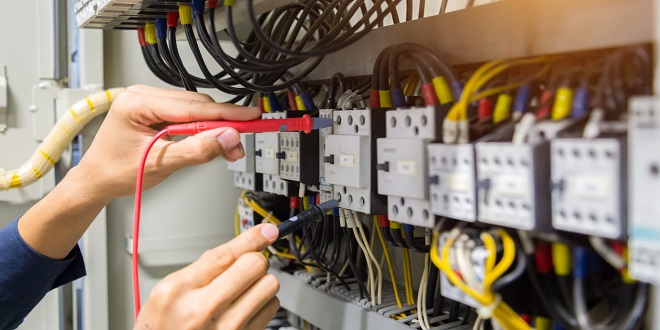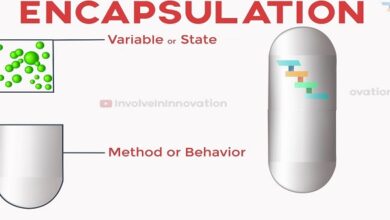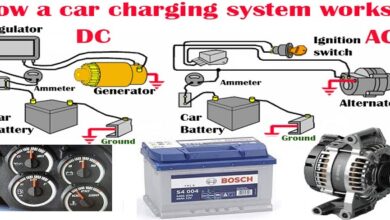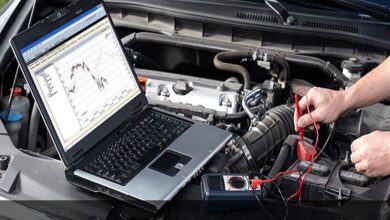
Cables
Cables used for motor vehicle applications are almost always copper strands insulated with PVC. Copper, beside its very low resistivity of about 8m, has ideal properties such as ductility and malleability. This makes it the natural choice for most electrical conductors PVC as the insulation is again ideal, as it not only has very high resistance, the order of 1015m, but is also very resistant to petrol, oil, water and other contaminants.
The choice of cable size depends on the current drawn by the consumer. The larger the cable used then the smaller the volt drop in the circuit, but the cable will be heavier. This means a trade-off must be sought between the allowable volt drop and maximum cable size.
Color codes and terminal designations
As seems to be the case for any standardization, a number of colour code and terminal designation systems are in operation. For reference purposes I will just make mention of three. First, the British Standard system. This system uses 12 colors to determine the main purpose of the cable and tracer colors to further define its use.
A system now in use almost universally is the terminal designation system in accordance with DIN 72 552. This system is to enable easy and correct connections to be made on the vehicle, particularly in after-sales repairs. It is important, however, to note that the designations are not to identify individual wires but are to define the terminals of a device.
Harness design
The vehicle wiring harness has developed over the years from a loom containing just a few wires, to the looms used at present on top range vehicles containing well over 1000 separate wires. Modern vehicles tend to have wiring harnesses constructed in a number of ways. The most popular is still for the bundle of cables to be spirally wrapped in no adhesive PVC tape.
Another technique often used is to place the cables side by side and plastic weld them to a backing strip. This method allows the loom to be run in narrow areas, for example behind the trim on the inner sill or under carpets.
Printed circuits
The printed circuit is used almost universally on the rear of the instrument pack and other similar places. This allows these components to be supplied as complete units and also reduces the amount and complexity of the wiring in what are usually cramped areas
The printed circuits are constructed using a thin copper layer that is bonded to a plastic sheet – on both sides in some cases. The required circuit is then printed on to the copper using a material similar to wax. The unwanted copper can then be etched away with an acid wash. A further layer of thin plastic sheet can insulate the copper strips if required.
Fuses and circuit breakers
Some form of circuit protection is required to protect the electrical wiring of a vehicle and also to protect the electrical and electronic components. It is now common practice to protect almost all electrical circuits with a fuse. The simple definition of a fuse is that it is a deliberate weak link in the circuit. If an overload of current occurs then the fuse will melt and disconnect the circuit before any serious damage is caused. Automobile fuses are available in three types, glass cartridge, and ceramic and blade type.
Terminations
Many types of terminals are available and have developed from early bullet-type connectors into the high quality waterproof systems now in use. A popular choice for many years was the spade terminal. T
Protection against corrosion of the actual connector is provided in a number of ways. Earlier methods included applying suitable grease to the pins to repel water. It is now more usual to use rubber seals to protect the terminals, although a small amount of contact lubricant can still be used.
Last word
The pressure switch shown could be used to monitor over-pressure in an air conditioning system and simply operates by pressure on a diaphragm which, at a pre-determined pressure, will overcome spring tension and close (or open) a set of contacts.
Finally, the inertia switch is often used to switch off the supply to a fuel injection pump in the event of an impact to the vehicle




